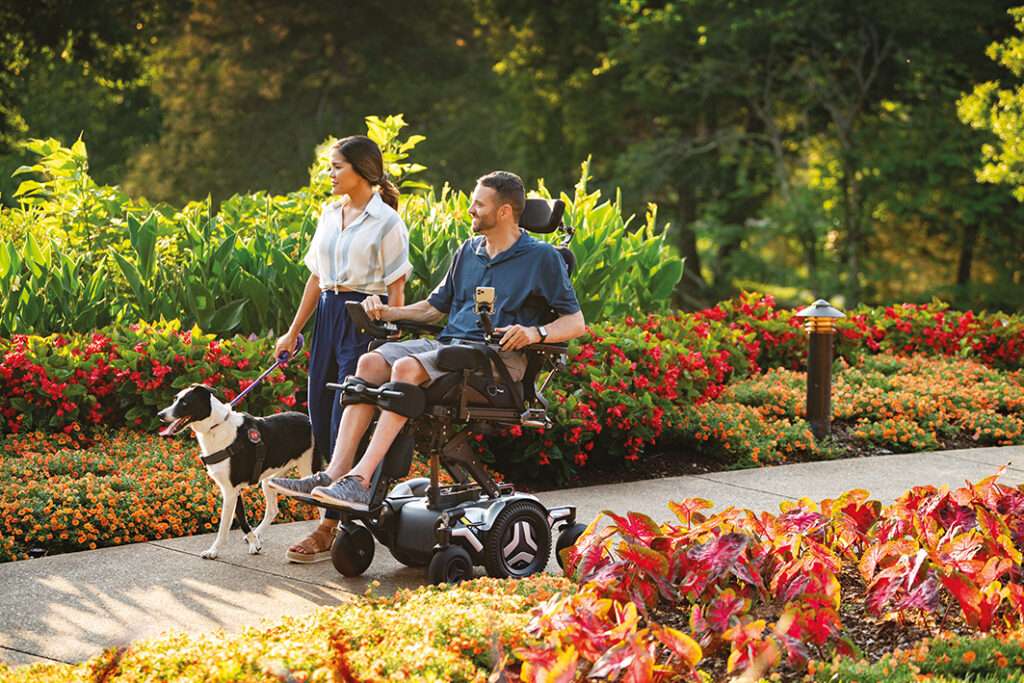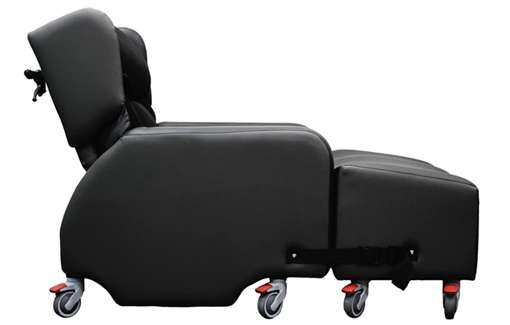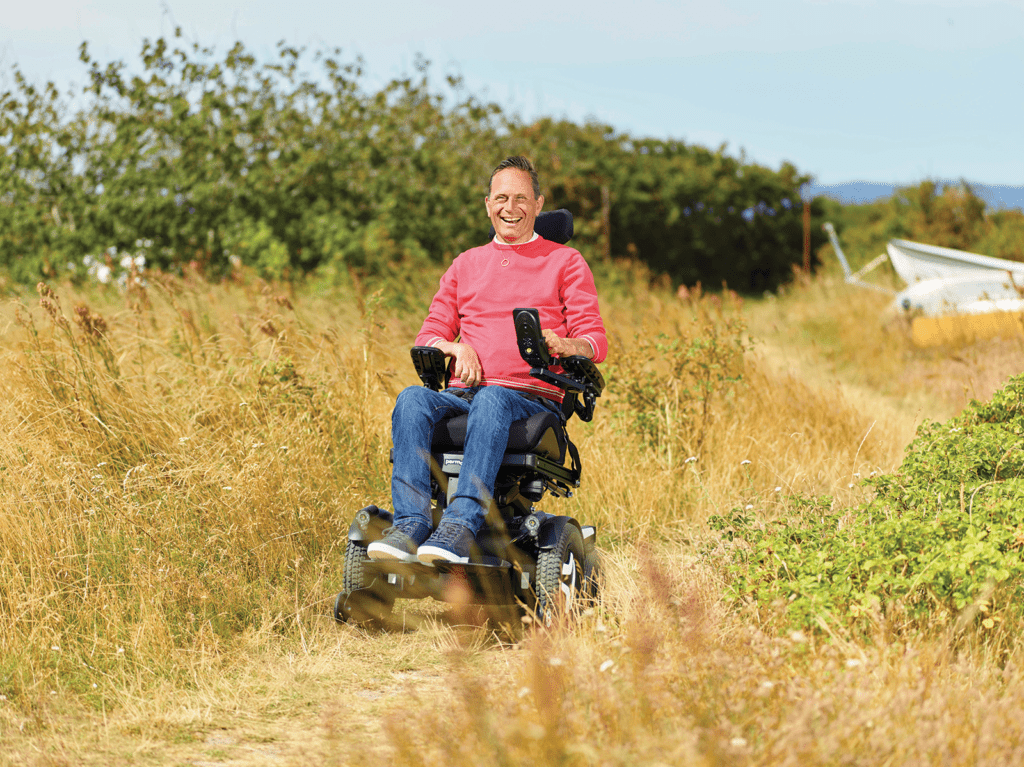With a wide range of mobility aids available to anyone who needs some assistance when walking, it can be very helpful to be aware of the kinds of walking aids and which would be ideal for your particular needs.
From walking frames and wheeled walkers to Zimmer frames and rollators — all could be of use…
But what’s the difference between walking frames, wheeled walkers, Zimmer frames, and rollators? And which offers the amount of support that you would like when walking?
If you already know they type of mobility support you require, take a look at our range of mobility aids to decide which is best for your situation.
Jump straight to…
Walking Frames
Walking frames offer support for people when they’re walking around both indoors and outdoors. They provide stability and balance to those who are a little less steady on their feet.
Designs come with three or four legs (depending on how much stability or assistance you need). There are rubber ferrules attached at the bottom of each leg to give you some grip on the ground and hold the frame in place.
Generally, walking frames are used by people who may be recovering from an injury. Or if someone is having some difficulties with balance when staying mobile.
When using a walking frame, 64% of the user’s weight is transferred through the arms. This makes them a lot more stable/ comfortable than crutches.
A few additional benefits:
- Walking frames are easy to use
- They can fit into smaller areas, such as public transport, car boot and/or the corner of smaller homes, when not in use.
Walking frames with wheels
If you’re finding it too difficult to move your standard walking frame, it is possible to get one fitted with wheels which makes it easier to move. With a two-wheeled walking frame, the wheels are fitted to the front legs whilst the back two legs have the same rubber ferrules.
Wheeled walkers also require slightly less effort as you only need to tilt the frame forward and lift the back two legs to be able to move around. This is ideal for using around the house and for long periods as you expend less energy.
Zimmer Frames
There isn’t any difference between walking frames and Zimmer frames. Zimmer is a brand of walking frame — a bit like the Hoover is a brand of vacuum cleaner.
However, the reason Zimmer frames are so popular is because they are very light weight and the frame is adjustable.
The non-wheeled version is more stable than a narrower, wheeled Zimmer frame. Although they are potentially harder to manoeuvre around the home.
The user of the Zimmer frame will have to have reasonable strength in their arms, as the frame needs to be lifted every time they step forward.
Wheeled Walkers
Wheeled walkers are fitted with 4-wheels. They come in lots of different configurations and provide stability whilst still being easy to move.
If the individual has trouble with balance, a wheeled walker may not be the best option. The wheels could increase their risk of a trip or fall.
However, if balance isn’t such an issue, and the wheeled walker is just used for aiding to walking, wheeled walkers are the way to go.
The wheeled walker requires less arm strength, and they can also partially support body weight and balance.
A few additional benefits:
- 4-wheeled walkers can also be used as a temporary seat for people who need regular breaks.
- Many also have storage, so can be used as a carrier for shopping etc.
Rollators
In terms of the differences between wheeled walkers and rollators, they’re actually pretty much the same thing. A rollator refers to a 3-wheeled or 4-wheeled walking aid.
Rollators should not be used to actively support body weight, as they are liable to slipping out from under the individual if too much weight is unnecessarily put onto the frame. However, they do sport very practical hand-operated brakes if the user needs to use these.
Rollators can be used indoors, and outdoors and the walker can offer comfort for individuals suffering from illnesses such as arthritis, including mid and lower back pain.
Rollators with bags will help you carry your shopping around town.
Walking frames and Zimmer frames vs. wheeled walkers and rollators
So, we know that a Zimmer frame is just a particular brand of walking frame. And that rollators are just a class of wheeled walkers that sometimes have 3-wheels instead of 4…
But what about walking frames vs. wheeled walkers? The terminology is quite similar, but there are a couple of key differences between wheeled walkers and walking frames.
For people with balance problems, a walking frame is recommended for stability. However, we wouldn’t advise using a walking frame to travel longer distances. They are best for indoor use and short outdoor journeys e.g. around the garden.
A wheeled walker can be used for longer trips out, providing user has good enough balance!
Wheeled walkers and rollators also tend to have large tyres rather than the smaller, moulded wheels you’d see on a walking frame. Larger wheels are easier to manoeuvre, have better grip, and do better with outdoor use (which is mostly where you’d use a rollator).
They’re available in three-wheeled and four-wheeled models and they are a bit smaller than walking frames.
Brakes is another key difference. Wheeled walkers and rollators are fitted with brakes. Walking frames are not. That’s because the former has wheels on each leg. They need brakes to ensure it stays steady and stationary when you need it to!
Wheeled walkers are fitted with handy brakes so that you can lock the walker in place when you want to remain stationary.
| Walking Frame | Wheeled Walker | Zimmer Frames | Rollators | |
| Wheels | Not usually | Yes | Not usually | Yes |
| Foldable | Yes | Yes | Yes | Yes |
| Breaks | No | Yes | No | Yes |
| Seat | No | Yes | No | Yes |
| Indoor | Yes | Yes | Yes | Yes |
| Outdoor | Yes (short distances) | Yes | Yes (short distances) | Yes |
Summary
Walking frames & wheeled walkers offer different levels of support and mobility to people who have varying needs.
The main difference with these walking aids is the amount of support offered by both:
- Walking Frames offer more help to the user in standing upright, if you feel this is right for you, then a walking frame would be a good option.
- Rollator|Wheeled Walkers always come with wheels – this is good for increased mobility but is only ideal if the user has good balance already.
If you need help staying upright when walking around; a walking frame or ‘Zimmer frame’ is the way to go.
If you don’t require too much support when walking and are steadier on your feet – a wheeled walker/rollator is the better option.
For other any other requirements, browse our mobility aids & walking aids to find what is right for you.















